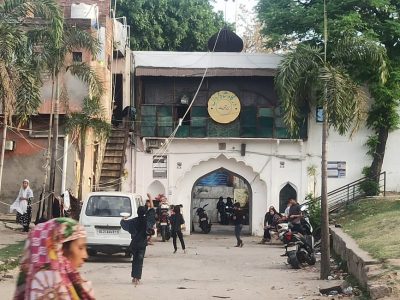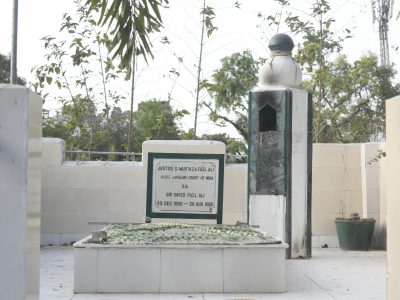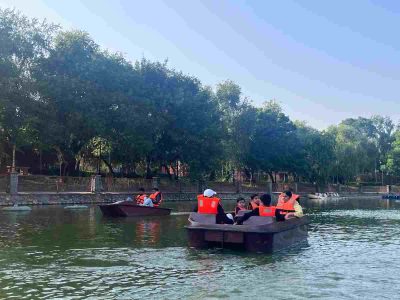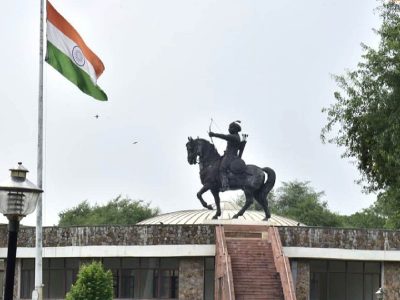Moinuddin meticulously sweeps the dusty floors surrounding a grave, his lips moving in silent prayer. With a handkerchief covering his head out of reverence for the “greats”, as he affectionately calls them, he speaks of his steadfast faith in the dargah.
“I have been coming to Dargah Shah-e-Mardan for the last seven to eight years,” he says, a glint of devotion shining in his eyes.
This 700-year-old dargah, nestled in Delhi’s Jor Bagh, holds the distinction of being one of India’s oldest. It attracts people from all walks of life, irrespective of religion, caste, or creed, each hoping for their wishes to be granted within its hallowed grounds.
According to historian Rana Safvi, the dargah’s origins are steeped in legend. It is believed that in the 15th or 16th century, a Shia Muslim man named Arif Shah sought refuge at the spot where the dargah now stands, invoking the name of Imam Ali. Legend has it that Imam Ali himself appeared before Arif Shah, saving him from harm and prompting the construction of the dargah.

Named after Imam Ali, also known as Shah-e-Mardan, meaning ‘King Of Heroes’, the dargah holds immense significance for the Shia Muslim community.
Syed Bahadur Abbas Naqvi, General Secretary of Anjuman-e-Haideri, which oversees the dargah complex, emphasises its importance not only to Delhi’s Shia community but also to those living in neighbouring states like Uttar Pradesh and Haryana.
“Tazias from all over the city are buried on our Karbala ground,” asserts Abbas, referring to the commemorative processions marking the Battle of Karbala, a pivotal event in Shia Islam.
Karbala, a city in modern day Iraq is famous as the field of battle between forces of Umayyad Caliph Yazid and Husayn Ibn Ali, son of Imam Ali in 680 AD.
The papier mache replicas, known as Tazias, are carried by mourners during the month of Muharram to honour Imam Husayn Ibn Ali’s sacrifice.
Reflecting on the dargah’s rich history, Abbas notes the impact of the 1947 Partition. The area was initially known as Karbala Colony. Today, it is known as BK Dutt Colony and is surrounded by structures commissioned by Qudsia Begum, grandmother of the last Mughal emperor Bahadur Shah Zaffar.
Renowned filmmaker and heritage activist, Sohail Hashmi praises Qudsia Begum’s contributions, highlighting structures like Qudsia Begum Mosque and Bibi ki Chakki within the dargah complex.
“She was a powerful regent and administrator in her own right,” he says.
While both shrines draw devotees daily, only women are permitted entry into Bibi ki Chakki.
Devotees flock to Bibi ki Chakki to pray before a millstone believed to have been used by Fatima, daughter of Prophet Muhammad.
Hashmi reveals historical accounts of Timur’s visit to the dargah in 1399 AD, during which a Tazia was buried, marking one of the earliest such burials in the world.

The regal begum now rests peacefully alongside an odd 111 graves at her mazar (mausoleum) in Karbala Ground.
“It is a great honour to be able to witness and pray to the very footprint of our Shah-e-Mardan,” says a devotee who did not wish to be named.
“Qudsia Begum was very spiritual in her own right and she was the one who brought this important stone to the land,” claims Abbas.
The dargah has also hosted eminent figures like India’s first prime minister, Jawaharlal Nehru, and Rajiv Gandhi, attesting to its enduring significance.
With lakhs of devotees visiting during Muharram and Chhehlum, the dargah’s complex, adorned with centuries-old graves, serves as a site of spiritual solace for many.
For devotees like Mahfooz Ali from Moradabad, Uttar Pradesh, the dargah offers a sacred refuge.
“We don’t have many dargahs to turn to, hence I make it a point to visit here every once in a while,” he shares.
Abbas emphasises the dargah’s role in providing a spiritual sanctuary for those unable to visit holy shrines in distant lands.
“With important religious symbols enshrined here, people get an opportunity to observe their religious practices,” he explains.
As devotees continue to stream into the dargah, seeking solace and blessings, Moinuddin reflects on its inclusive nature.
“Dargahs are an essential feature of the Sufi doctrine,” remarks Hashmi, underscoring their enduring appeal.
“The great Imam will keep inspiring future generations,” adds Abbas, his voice filled with pride.




